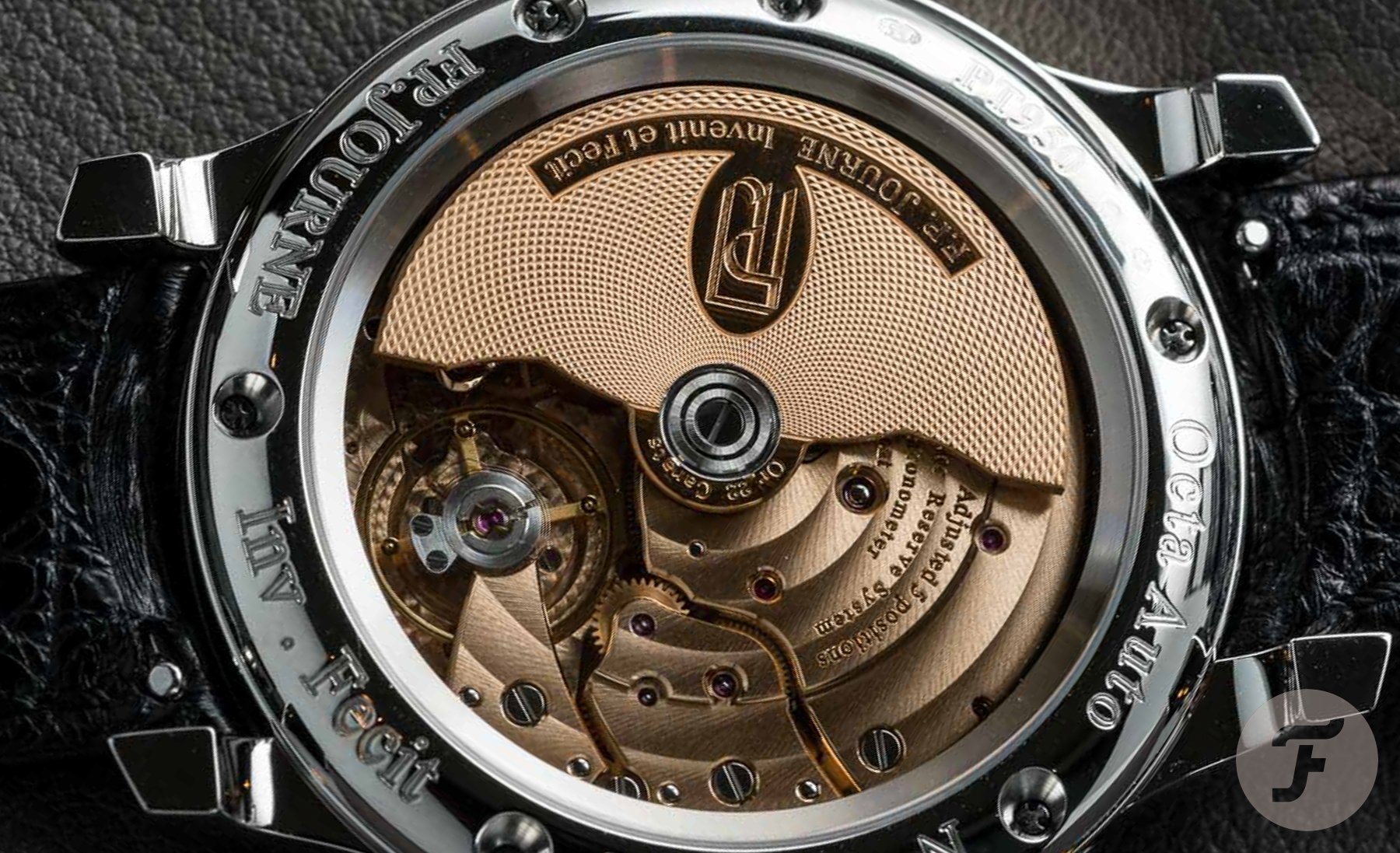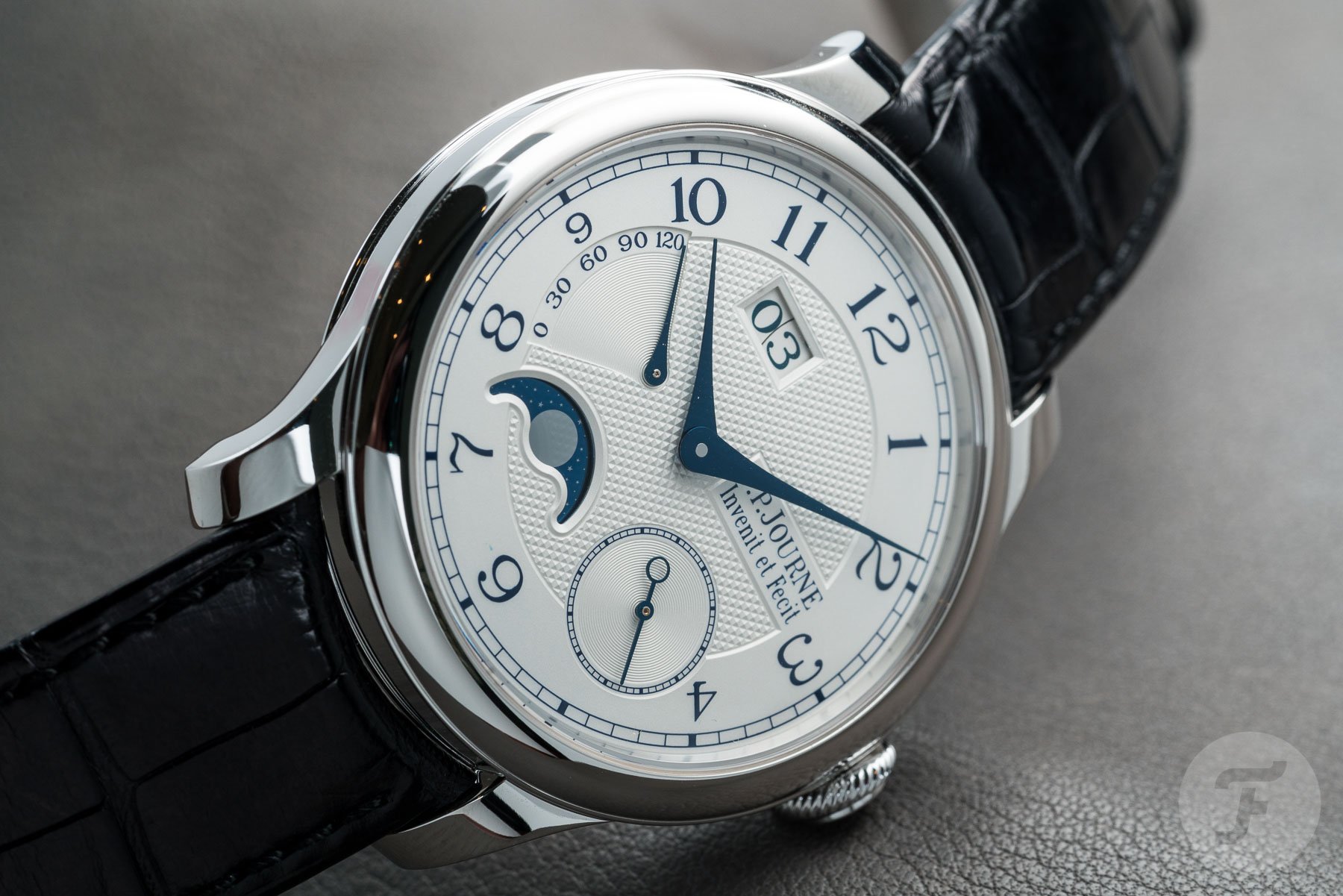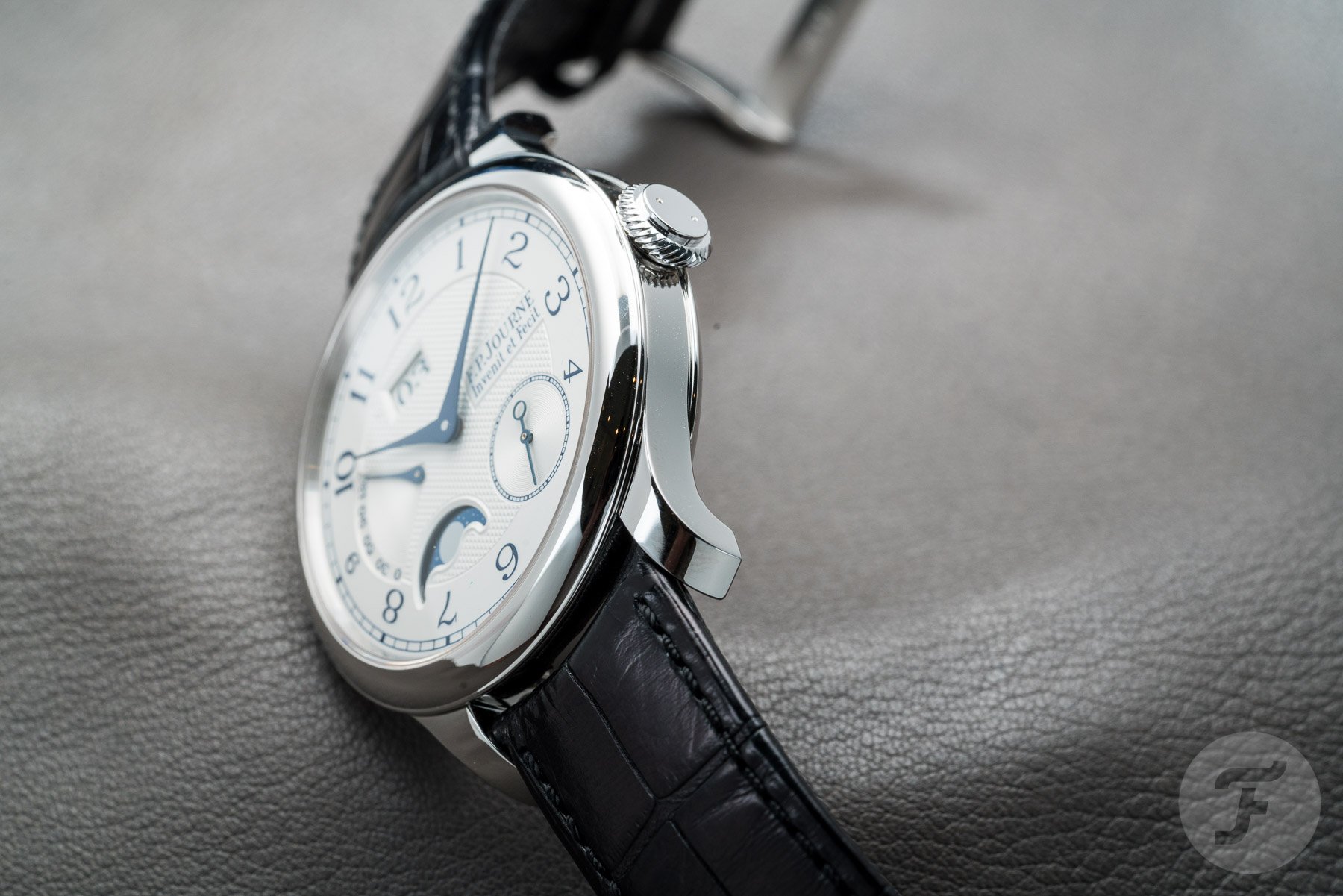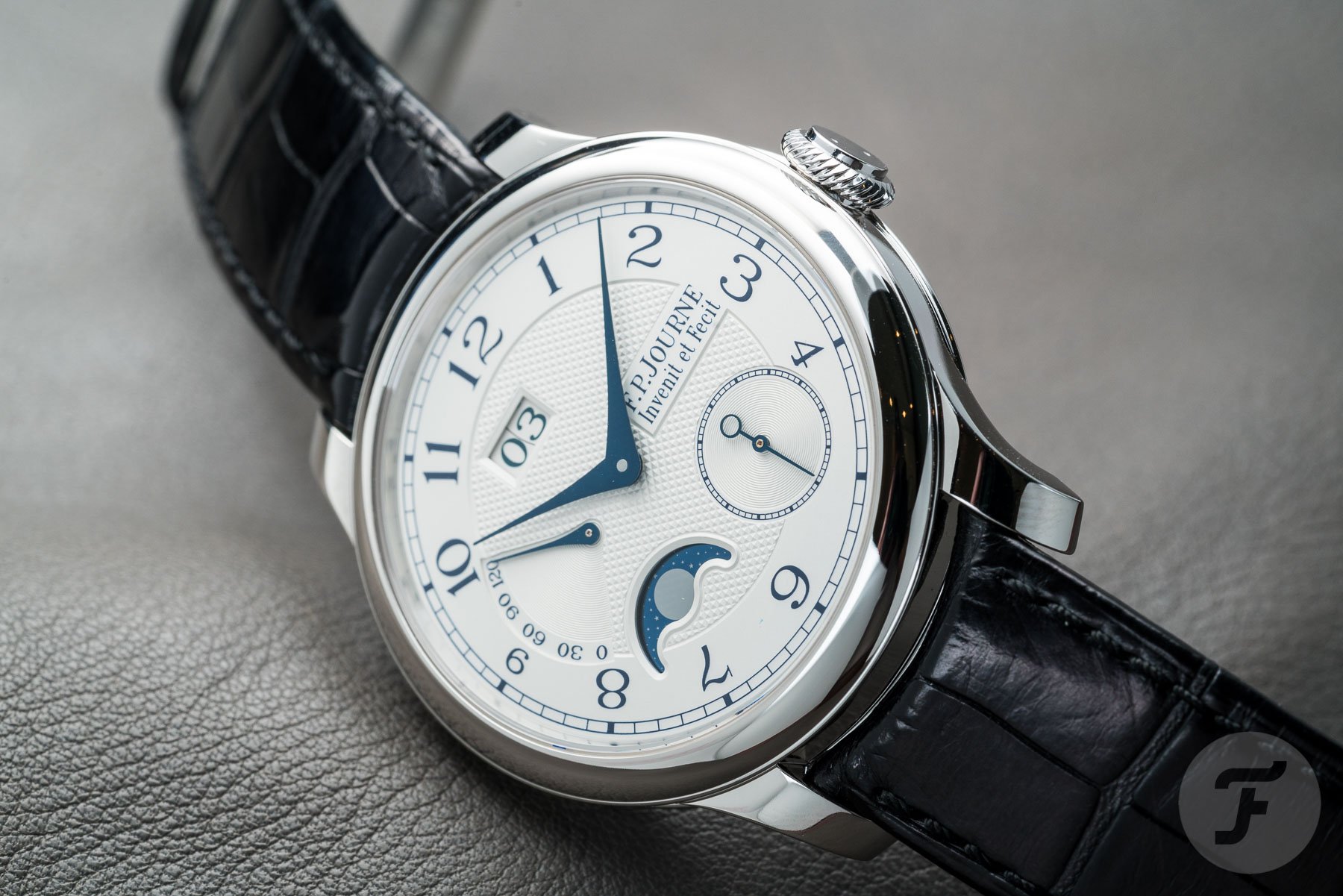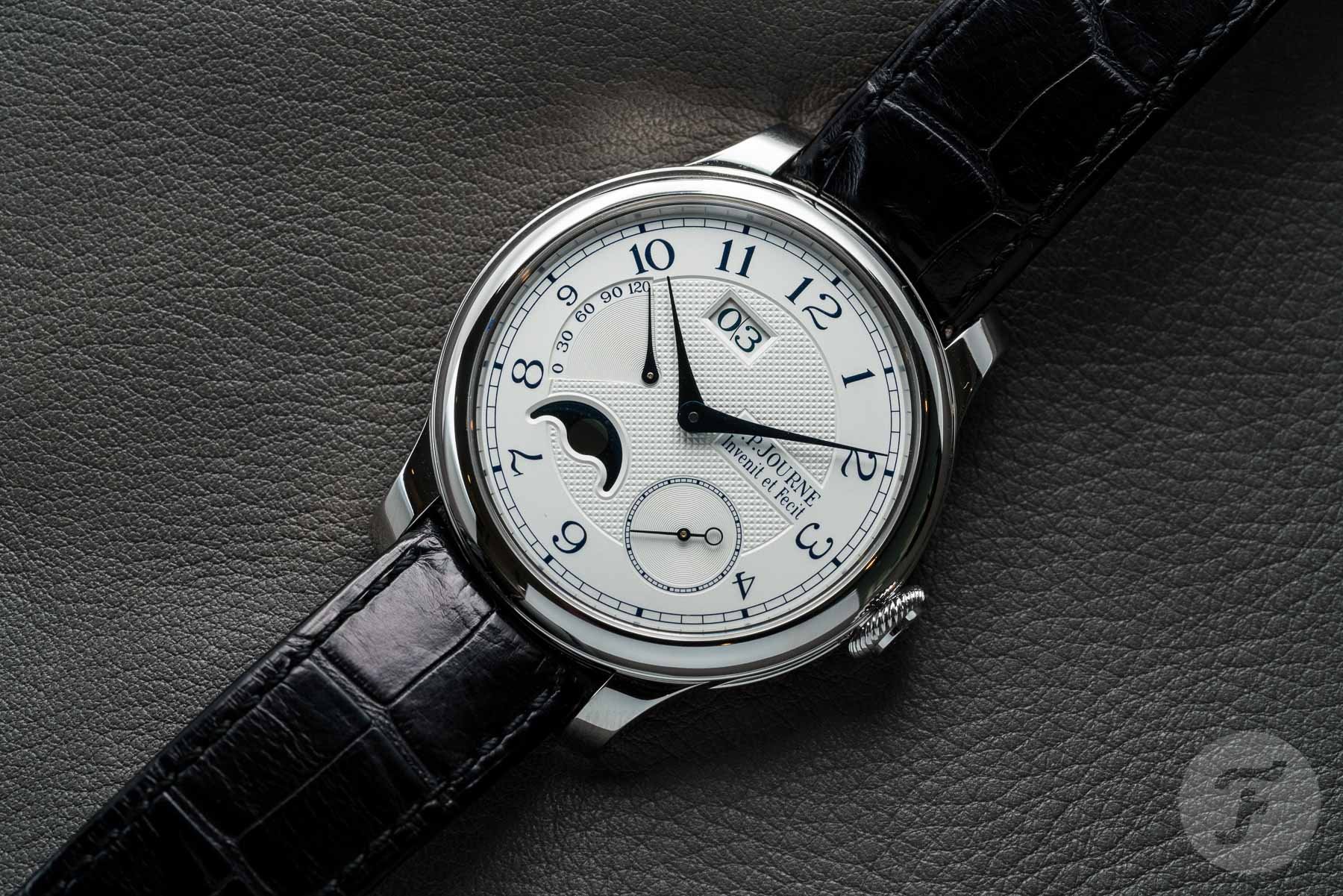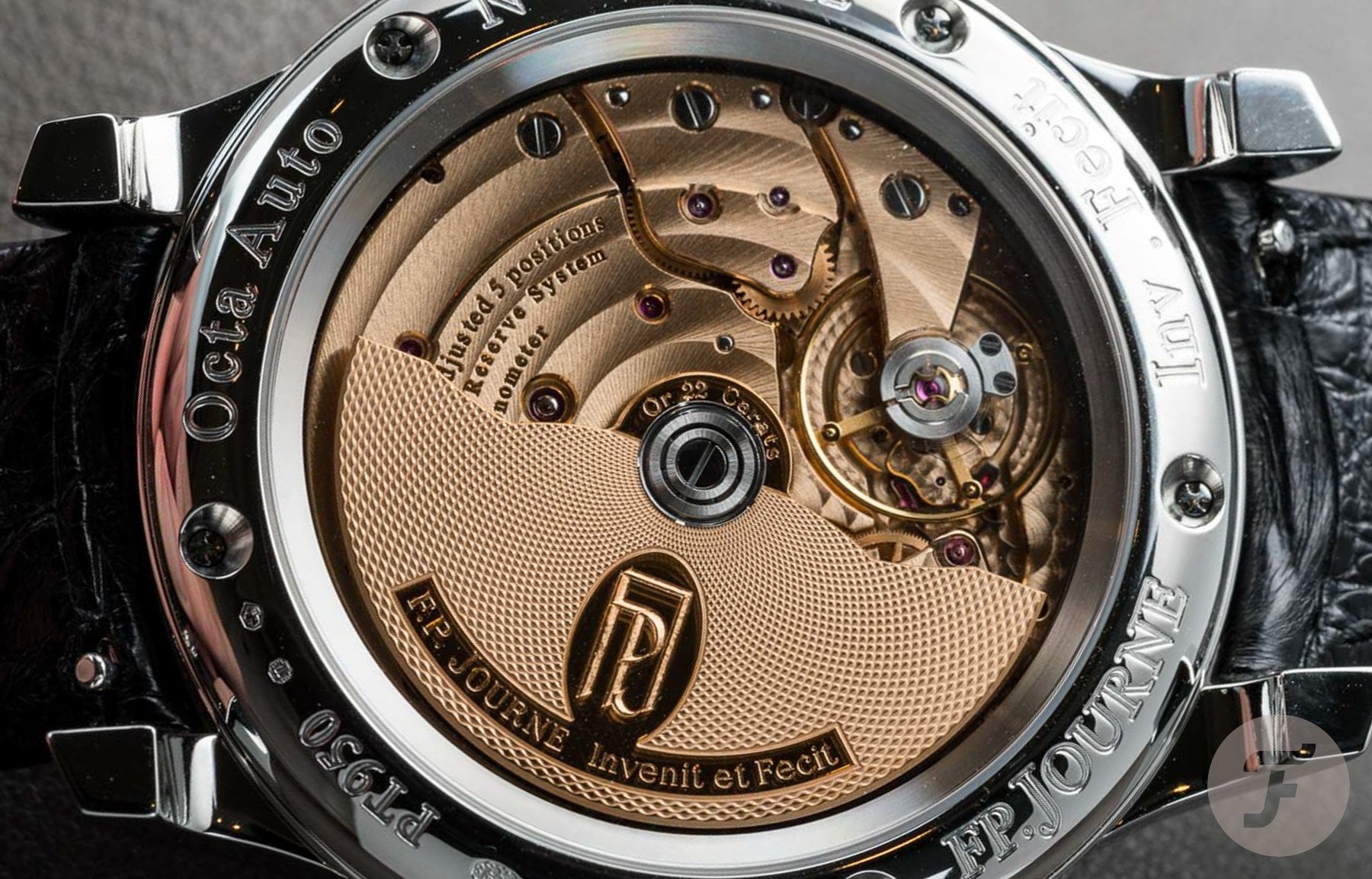Hands-On Watch Review: The F.P. Journe Automatique Lune
The F.P. Journe Automatique Lune you see here is the latest iteration of a design that debuted in 2007. In addition to the previous model’s 40mm case size, the latest iteration is also available in a 42mm case, just 10.6mm thick. It features a new, larger crown, with F.P. Journe’s signature “silk rope” knurling. Available in either platinum or 18k rose gold, on either a bracelet or an alligator strap, the case is nearly identical in design to Chronomètre Optimum we checked out a few weeks ago.
The Automatique Lune features a solid gold dial with a galvanized silver layer on top. In the center, one finds three-dimensional Clous de Paris hobnail guilloché. Outside of it, elegant Arabic numerals and a railroad minute track in blue match the F.P. Journe signature teardrop hands perfectly. At four-thirty lies a radially grained small seconds sub-dial with a markedly different, counter-balanced seconds hand. To the left of it is a new moonphase indicator. While previous versions featured a mirror-finished golden moon on a metal disc, the latest features a disc made of sapphire with a seemingly textured moon. The big date indicator at 11 o’clock features two numeral discs on the same plane (something, in my opinion, Lange could take a hint from). On the newer model, the apertures are larger for improved legibility. At nine o’clock, a power reserve indicator marking 120 hours brings all of the complications together.
Under the hood
At the heart of the watch lies the F.P. Journe caliber Octa 1300.3. This striking 3Hz movement is fashioned completely in rose gold. It is decorated with beautiful radial striping and gleaming bevels on the bridges and perlage on the lower plate. The rose-lathe-cut 22k rose gold rotor features immaculate barleycorn engraving.
But the movement doesn’t merely look pretty, oh no. Rather, its performance is what sets it apart. The Octa 1300.3 was the first automatic movement on the market to feature 120 hours of precise timekeeping autonomy. This means that while the power reserve indicator marks 120 hours, this is simply the period at which the movement delivers optimal torque to the escapement. In truth, the power reserve is in the range of 160 hours. To some, a power reserve indicator on an automatic watch may seem unnecessary. In this case, however, it is potentially a useful reminder to the wearer to top off the movement for optimal accuracy.
Although, if the watch is being worn, that shouldn’t be a problem. The unidirectionally winding rotor uses a special locking bearing mechanism that prevents inefficient back-swinging. Thanks to this, every millimeter of rotor movement winds the mainsprings. What’s even more impressive is that F.P. Journe achieved its incredible power reserve with a single mainspring barrel. Cooler still, the moonphase requires no dedicated pushers. Both the moonphase and the date have quick-set adjustability via the crown.
My thoughts
If you were following Fratello’s Instagram story, you may have seen this one on Rob’s wrist in more than a couple of shots. And I can’t say I blame him! Out of all the F.P. Journe pieces he and Lex got to see, the Automatique Lune just so happens to be my top pick! In fact, you could even say I’ve gone a bit loony for the Lune. So, why do I like it so much?
To me, the Automatique Lune provides an ideal balance of romantic and practical complications. While a moonphase always looks nice, looks only count for so much. Balancing it with a clean, legible double date window hits the spot for practicality. As someone who rotates my watches a lot, the power reserve (or rather, “optimal torque”) indicator could actually be quite handy after days off the wrist. I’m all for keeping my watches performing optimally when I can.
This particular piece in platinum will set you back €50,100 where as the red gold version retails for €46,000. So what do you think of the F.P. Journe Automatique Lune? Does it float your boat like it does mine? Also, we have in mind to run an in-depth series on the complications of F.P. Journe to better explain what’s going on inside the watches (and, indeed, the manufacture) for you all. What would you like to see? Which models or parts of the brand’s history interest you the most? Let us know in the comments below and learn more about the brand by visiting its official website here.

